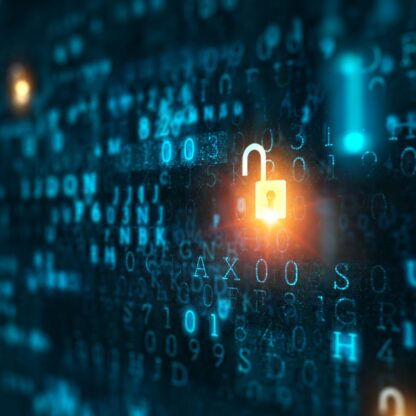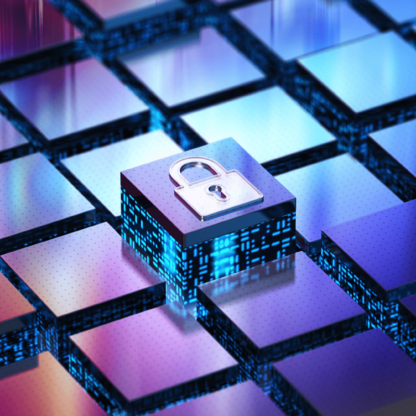The evolution of technologies such as AI will transform how enterprises tackle digital threats this year. As threats become more sophisticated and diverse, enterprises will need to employ comprehensive and innovative strategies to manage vulnerabilities, predict threats, and build strong cybersecurity frameworks. Explore the numerous trends impacting cybersecurity in 2024 and what they mean for your business.
1. Cyber Resilience
Cyber resilience will be a key organizational capability in 2024. Unlike cybersecurity, which focuses primarily on preventing attacks, cyber resilience acknowledges that even the best security cannot guarantee 100% protection. Organizations will prioritize resilience measures such as incident response planning, recovery and continuity planning, integration of advanced technologies, and continuous testing of response readiness. These measures will help ensure operational continuity post-breach, with a focus on agile recovery, minimized data loss, and reduced downtime. The shift towards cyber resilience signifies a strategic pivot from solely preventive measures to a comprehensive approach that anticipates and mitigates the impact of cyber incidents.
2. Generative AI in Cyber Warfare
The increasing adoption of Generative AI (Gen AI) is set to bring a new level of sophistication to cyberattacks. From deepfake social engineering to the adaptive intricacies of malware, new threats will demand a transformation in both offensive and defensive cybersecurity strategies. Embracing Gen AI gives organizations strategic advantages in cyber warfare. When armed with advanced Gen AI tools such as predictive analytics, advanced endpoint protection, AI-based network traffic analysis, and cyber deception technology, enterprises are not only better equipped to defend against sophisticated threats but can also strategically navigate a complex and high-stakes digital landscape.
3. Next-Level Phishing Attacks
In the cybersecurity landscape for 2024, we expect social engineering attacks, especially phishing, to become more sophisticated. This is driven by the use of Gen AI tools, giving attackers the ability to create smarter and more personalized approaches. Responding effectively to these threats requires a comprehensive approach beyond individual vigilance. It involves organization-wide awareness initiatives, broad educational efforts, and the strategic integration of AI and zero-trust principles. A proactive response is crucial, emphasizing a collaborative and multifaceted defense strategy to address the increased risks from advanced phishing attacks this year.
4. Advanced Threat Detection Tools
The integration of AI and ML in threat detection tools marks a significant advancement in cybersecurity. These tools are designed to provide real-time analysis, enabling quicker identification and response to cyber threats. Examples include behavioral analytics, AI-enabled SIEM and SOAR, automated penetration testing, vulnerability management, etc. The use of machine learning algorithms enables these tools to adapt and learn from new threats continuously, improving their effectiveness over time. This trend signifies a shift from traditional, reactive cybersecurity measures to more proactive and predictive approaches. AI-driven threat detection can analyze vast amounts of data, identify patterns, and even predict potential attacks before they occur, significantly enhancing overall security effectiveness.
5. Integration of AI in Vulnerability Management
As cyber threats rapidly evolve, the use of dynamic and automated security systems will remain crucial. Enterprises are employing AI to automate the detection and prioritization of system vulnerabilities. These AI-driven systems can continuously scan and analyze networks to identify vulnerabilities. This reduces the time and resources traditionally required for manual vulnerability assessments. By leveraging AI, businesses can quickly address security weaknesses, patch vulnerabilities in real time, and proactively strengthen their defense against potential cyberattacks.
6. Zero-Trust Architecture
The adoption of zero-trust models is growing as organizations recognize the importance of strict security protocols. Zero trust operates on the principle of “never trust, always verify,” employing continuous verification of all users and devices, regardless of their location. This approach minimizes the attack surface by granting least-privileged access and verifying each request as if it originates from an open network. Implementing zero trust effectively reduces the potential for unauthorized access and data breaches, making it a cornerstone of modern cybersecurity strategies.
7. Cloud Security Posture Management
With the increasing adoption of multi-cloud strategies, ensuring a secure cloud infrastructure has never been more crucial. Cloud Security Posture Management (CSPM) tools such as Prisma Cloud, CrowdStrike Falcon, Microsoft Defender, and others can help enterprises maintain secure and compliant cloud environments. These tools are designed to automatically identify and remediate risks in cloud configurations and are evolving to become more sophisticated and automated. By continuously monitoring cloud assets for misconfigurations and compliance violations, CSPM tools help organizations avoid data breaches and maintain regulatory compliance.
8. Automated Incident Response
Automated incident response will continue to be a vital component of a modern cybersecurity strategy, ensuring organizations can promptly and effectively address security incidents. These automated systems can rapidly isolate affected areas, assess the nature of the attack, and implement pre-defined response protocols. This significantly shortens the response time to an incident and reduces dependence on manual intervention, limiting the potential damage caused by cyberattacks.
9. Enhanced IoT Security Frameworks
With the growing number of IoT devices, there will be an increased demand for enhanced security frameworks in 2024. These frameworks play a pivotal role in managing and securing IoT devices on a large scale. Given the diverse security levels of IoT devices, establishing a comprehensive framework is essential to mitigate the risks associated with them. An IoT security framework also outlines essential security measures enterprises should implement, including robust authentication methods, regular firmware updates, and network segmentation.
10. Behavioral Analytics for Insider Threat Detection
The use of AI-driven behavioral analytics is emerging as a key tool for detecting insider threats. Notable examples of these tools include Splunk UBA, Varonis DatAlert, and Forcepoint BA. These systems analyze user behavior patterns within an organization to identify unusual or high-risk actions. By detecting deviations from normal behavior, behavioral analytics can alert security teams about potential security threats from within the organization. This approach is particularly effective in identifying subtle and sophisticated insider threats that might otherwise go unnoticed.
Innovate with Cybersecurity in 2024
The evolving cybersecurity landscape demands a proactive, adaptive, and collaborative approach. By adopting zero-trust models, implementing Cloud Security Posture Management, leveraging automation and AI-driven tools, and establishing robust security frameworks, businesses can fortify themselves with a multi-dimensional shield against an array of evolving threats. Orion can help you navigate through this dynamic threat landscape, empowering businesses to securely drive innovation in 2024.
Orion has been enabling enterprises to prevent, detect, and respond to evolving cyber threats, minimizing potential attacks and improving customer trust. Learn more about our cybersecurity experience and expertise.


